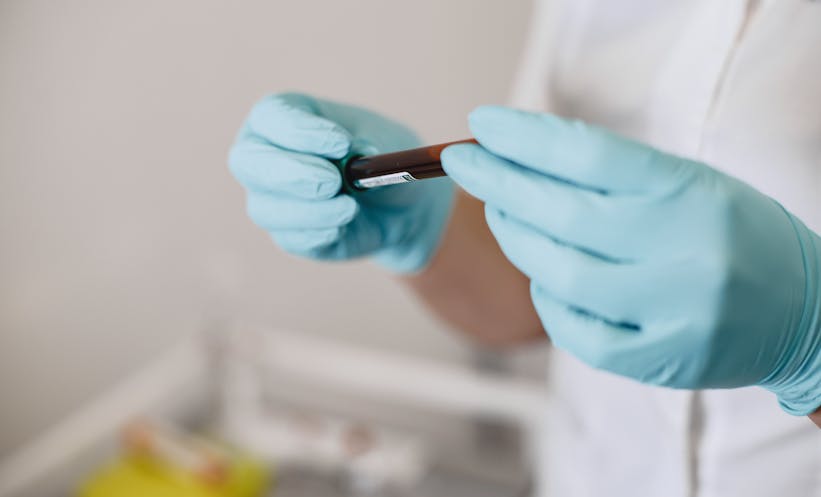Denis Poddubnyy | Head of Rheumatology, Department of Gastroenterology, Infectious Diseases and Rheumatology, Charité – Unviersitätsmedizin, Berlin, Germany
Citation: EMJ Rheumatol. 2023; DOI/10.33590/emjrheumatol/10302586. https://doi.org/10.33590/emjrheumatol/10302586.
![]()
What do you feel are the current unmet needs in rheumatology, and how could these be addressed in the future?
I think there are several unmet needs in rheumatology, and they might have a higher or lower relevance depending on the field we’re working in. For example, I’m working in the field of spondyloarthritis, and there we have unmet needs related to the proper diagnosis of spondyloarthritis. This is related to the fact that the diagnosis is like a puzzle, and there are many puzzle pieces. Whether each piece is correct largely depends on the interpretation of the information, for example, the correct interpretation of imaging findings.
We also have a problem, or an unmet need related to precision medicine. We have plenty of novel drugs, which is especially true for rheumatoid arthritis (RA), psoriatic arthritis (PsA) and to some extent axial spondyloarthritis (axSpA). However, we still do not have clear indicators or parameters to select the right drug for the right patient. Prediction of treatment response in a short and long-term perspective is an important issue for clinical practice.
We also have unmet need in terms of rather rare conditions where we do not have many therapeutic options. I’m referring to some forms of systemic inflammatory disorders such as mixed connective tissue disease, sarcoidosis, and some forms of vasculitis, where we haven’t seen any major developments in terms of new treatments or the development of new treatment options in recent years.
You have a particular focus on spondyloarthritis. What do you feel is currently overlooked in this disease?
In the field of spondyloarthritis, we had a great deal of development over the past 20 years. This is largely related to the invention and implementation of new treatment options used in daily clinical practice, including biological disease-modifying anti-rheumatic drugs (DMARDs) such as anti-TNFs, IL-17 inhibitors, and, lately, taregted synthetic DMARDS such as JAK inhibitors. We could improve the early diagnosis of axSpA. Currently, we can diagnose the disease fairly early, and we face an issue of making the correct diagnosis, especially at the early non-radiographic stage, where there is a substantial risk of misdiagnosis. If the diagnosis is solely based on, for example, the evidence of bone marrow oedema in the sacroiliac joints. However, we have learnt how to differentiate mechanically induced bone marrow oedema from that caused by inflammation, and this is something we try to disseminate currently. So, in our educational activities, we focus on making the correct diagnosis, because an accurate diagnosis is the best predictor of good treatment response.
In 2021, you co-authored a paper entitled ‘Differential diagnostic value of rheumatic symptoms in patients with Whipple’s disease’. Could you outline your findings from this paper?
It was very interesting to work with a specialist in infectious diseases. Whipple’s disease is a very rare infectious disease, and I was visiting patients in the inpatient department with a specialist in infectious diseases, he asked if I would be happy to contribute to a paper. In this work, we looked at the clinical pattern of symptoms in patients who received the diagnosis of Whipple’s disease.
The problem, usually in the majority of cases, is that Whipple’s disease is recognised very late, because the patient might present with typical rheumatic symptoms such as arthritis, and normally they are diagnosed with seronegative RA, and treated as such through the application of methotrexate, steroids, and later biological and targeted synthetic DMARDs. After months, or even years of ineffective treatment, there is a realisation that it might be Whipple’s disease. So, we tried to find early indicators that there might be a need to look for Whipple’s bacteria in the duodenum, for example.
What was quite interesting is that there was a specific pattern of joint involvement, so patients reported a sudden onset of joint pain, with swelling, sometimes going from one joint to another within several days. This presentation of sudden onset pain that changes localisation is not typical symptoms for normal RA. Such a pattern might also be observed in patients with crystal-related arthritis. Once the latter potential cause of symptoms is excluded, there is a possibility that this is Whipple’s disease. Thus, Whipple’s disease is often associated with specific patterns of joint involvement, which might prompt rheumatologists to look for Whipple’s disease.
You are currently examining whether biomarkers can reflect the structural progression of axSpA, osteoarthritis, and RA. Can you report your current findings, and how you hope this investigation will impact patients?
We started looking for biomarkers as predictors of structural damage progression in patients with axSpA over a decade ago. We learnt that elevated markers of inflammatory activity, such as the C-reactive protein, but also calprotectine and matrix metalloproteinase-3 are a predictor of structural damage progression. We thought that we might be able to find other biomarkers, for example, reflecting new bone formation and bone turnover, which would help us to identify patients at high risk for structural damage progression and that might have relevance for treatment if we are able to delay structural damage progression. So, we looked at many different biomarkers, from acute phase reactants to markers of bone metabolism and adipokines, and we were able to find some predictive and protective biomarkers; however, none of them could be incorporated into daily clinical practice because we have already quite strong predictors of future progression, namely elevated inflammatory activity, already present structural damage, smoking etc. It is difficult to identify biomarkers with added value to these strong predictors. One aspect that was, however, quite interesting in this research was that we identified that adipokines, such as leptin and high molecular weight adiponectin, were protective against structural damage progression. This is important from a gender perspective, because females have naturally higher levels of leptin and adiponectin, and epidemiological studies have shown that females develop less structural damage in the spine compared to males. Therefore, this might be related to this natural protective high level of leptin and adiponectin.
Is there any upcoming research you believe will be notable, or perhaps innovative, in the field of rheumatology?
I think that there are several very interesting developments on the horizon in rheumatology, and they are related to different aspects. Firstly, we are seeing really powerful general development of methods of artificial intelligence, including deep learning. So, I would expect to see the development of tools that would support making diagnoses in patients with rheumatic conditions in the next few years. This might be based on the evaluation of symptoms as expressed by a patient, but also the interpretation of imaging findings. I would also expect new imaging methods to improve the diagnosis of rheumatic conditions and the prediction of structural damage development across different conditions.
In terms of treatment, I do hope that we will be getting closer to the use of precision medicine to identify and apply individualised treatment strategies, and I hope that we will be able to interfere with the immune system in a better, more precise way compared to what we’re doing now. There are several interesting works focused on the certain inflammatory pathways, which are moving towards the identification of disease-relevant cells, which can potentially be targeted that are directly affected. This would be a next big breakthrough since the development of biological DMARDs.
You are a member of the executive committee of the Assessment of SpondyloArthritis International Society (ASAS). What are the aims of the society, and how has your experience on the committee been thus far?
ASAS is a group of international experts interested in the field of spondyloarthritis. This group was largely responsible for the major developments and improvements within the field in the past few decades. This group developed new classification criteria that covered the advanced stage of the disease and the early disease stage. The group developed a number of instruments for the assessment of the disease in clinical practice and research, and was also responsible for the development of international management recommendations based on evidence.
My experience is very, very favourable. I was able to contribute to a number of initiatives within this group, and this refers specifically to the management recommendations, the ASAS core set, and to an initiative related to the development of a consensus definition of axial involvement in PsA. This is an initiative that we conduct with another expert group dealing with PsA, the Group for Research and Assessment of Psoriasis and Psoriatic Arthritis (GRAPPA). Recently, we have started another initiative on the definition of difficult-to-treat or difficult-to-manage spondyloarthritis. We are just at the beginning, so we are planning to find out how to optimally define this clinical situation. Regarding the next steps, I would expect that we will be able to provide recommendations on how to deal with this situation in daily clinical practice and clinical trials.
The group is also working on several very important educational initiatives such as a slide library, which is quite a unique project that contains more than 500 slides covering all aspects of spondyloarthritis in 14 languages and is free to use across the world. Similarly, we started an initiative known as the ASAS case library a couple of years ago, where we show the entire diagnostic process, starting from patient symptoms, through imaging, to evaluation of the whole picture; here we put imaging into clinical context and educate on the diagnosis and differential diagnosis of spondyloarthritis.
You are part of the steering committee of GRAPPA, which was set up to allow the sharing of information and research in psoriasis and PsA. In your opinion, what are the biggest achievements of the group so far, and what is GRAPPA hoping to achieve in the future?
GRAPPA is a research group of experts and patient research partners with a special interest in PsA. I’m trying to put effort into working in the interface between PsA and axSpA, and this is how we started the already-mentioned initiative of axial PsA. GRAPPA has been very successful over the past few years in establishing outcome measures and treatment guidelines in PsA. GRAPPA is a platform connecting dermatologists and rheumatologists from all over the world who are interested in the problem of psoriasis and PsA. This is a quite an effective platform that supports the conduction of collaborative projects, related to clinical and basic aspects of PsA.
You are a Principal Investigator in the AXIS study. Could you tell us what you hope to discover and any findings to date?
AXIS started a few years ago as a small initiative, during which we tried to find an expert consensus definition of the axial involvement in PsA. We very quickly identified that it would be difficult to impossible to test any new definition in the existing patient cohorts, and we realised that we needed to recruit a new cohort of patients with PsA to characterise the axial domain in a standardised way. This is how we came to the prospective part of this study It took a while until we managed to begin this study, because we wanted all study centres to perform standardised imaging examinations of the sacroiliac joints of the spine, including X-rays and MRI. Now, however, the study is ongoing, and we are very happy that we have more than 50 centres from over 20 countries all over the world, including Europe, North and South America, Australia, Africa, and Asia; and the study is recruiting well. We have recruited more than 200 patients; however, we expect to recruit 400 patients in total. We will likely complete recruitment by the end of this year and, afterwards, we plan to analyse the data and to come up with a draft definition of axial PsA. I do believe that, in addition to the definition, we will learn a lot about axial involvement in patients with PsA, and about similarities and differences to primary axSpA.









